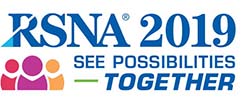

ParticipantsBeatriz E. Adrada, MD, Houston, TX (Presenter) Nothing to Disclose
Rosalind P. Candelaria, MD, Houston, TX (Abstract Co-Author) Nothing to Disclose
Kenneth Hess, PhD, Houston, TX (Abstract Co-Author) Nothing to Disclose
Stacy Moulder, MD, Houston, TX (Abstract Co-Author) Research funded, AstraZeneca PLC Research funded, F. Hoffmann-La Roche Ltd Research funded, Oncothyreon Research funded, Novartis AG Research funded, Merck KGaA
Lumarie Santiago, MD, Houston, TX (Abstract Co-Author) Nothing to Disclose
Vicente Valero, MD, Houston, TX (Abstract Co-Author) Nothing to Disclose
Elsa M. Arribas, MD, Houston, TX (Abstract Co-Author) Scientific Advisory Board, Volumetric Biotechnologies, Inc; Stockholder, Volumetric Biotechnologies, Inc
Tanya W. Moseley, MD, Houston, TX (Abstract Co-Author) Consultant, Hologic, Inc
Deanna L. Lane, MD, Houston, TX (Abstract Co-Author) Nothing to Disclose
Marion E. Scoggins, MD, Houston, TX (Abstract Co-Author) Institutional Research Grant, General Electric Company
H. Carisa Le-Petross, MD, FRCPC, Houston, TX (Abstract Co-Author) Nothing to Disclose
David A. Spak, MD, Houston, TX (Abstract Co-Author) Nothing to Disclose
Monica L. Huang, MD, Houston, TX (Abstract Co-Author) Nothing to Disclose
Jennifer Litton, Houston, TX (Abstract Co-Author) Nothing to Disclose
Alistair M. Thompson, Dundee, United Kingdom (Abstract Co-Author) Nothing to Disclose
Jason White, Houston, TX (Abstract Co-Author) Nothing to Disclose
Gary J. Whitman, MD, Houston, TX (Abstract Co-Author) Nothing to Disclose
Jessica W. Leung, MD, Houston, TX (Abstract Co-Author) Scientific Advisory Board, Subtle Medical
Wei T. Yang, MD, Houston, TX (Abstract Co-Author) Royalties, Reed Elsevier
Gaiane M. Rauch, MD, PhD, Houston, TX (Abstract Co-Author) Nothing to Disclose
Beatriz.Adrada@mdanderson.org
PURPOSETNBC is a heterogeneous disease with distinct molecular subtypes that convey diverse clinical behavior and response to chemotherapy. The aim of this study is to determine if early US after two cycles of NAC has the potential to identify excellent responders to standard NAC averting need for costly genomic profiling and selecting patients with lower likelihood to achieve pathologic complete response (pCR) for targeted therapeutic trials.
METHOD AND MATERIALS107 patients enrolled in "A randomized triple Negative Breast Cancer Enrolling Trial to Confirm Molecular Profiling Improves Survival" (ARTEMIS; NCT02276443) had US with three-dimensional measurements at baseline and after 2 cycles of Adriamycin-based NAC. Pathologic response was assessed at the time of surgery after completing anthracycline/taxane-based NAC. The relationship between pCR and primary tumor volume reduction (PTVR) by US was evaluated using recursive partitioning and ROC analysis.
RESULTSOverall, 40% (43/107) of pts achieved pCR. Recursive partitioning showed that in patients with PTVR after 2 cycles >=73% pCR was 23/31 (74%). If the PTVR was < 73%, only 20/76 (26%) pts had pCR. In pts with <73% PTVR, the baseline volumetric size of the primary tumor (BTVS) further influenced pCR. If BTVS was < 35cm, 32% (19/59) had pCR, and if >=35 cm, only 6% had pCR (1/17) (P < 0.0001). The percentage of TVR after 2 cycles was also predictive of pCR (AUC = 0.79, 95% CI = 0.70, 0.88, p < 0.0001).
CONCLUSIONEarly US exam after 2 cycles can identify the subgroup of TNBC with excellent response to standard NAC. Reduction in percent tumoral volume may predict patients with higher likehood to achieve pCR. An exploratory cut point of 73% PTVR will be tested in a validation study.
CLINICAL RELEVANCE/APPLICATIONEarly US exam after 2 cycles can identify the subgroup of TNBC with excellent response to standard NAC, eliminating need for expensive genomic profiling and avoiding toxicity of investigational targeted therapy.